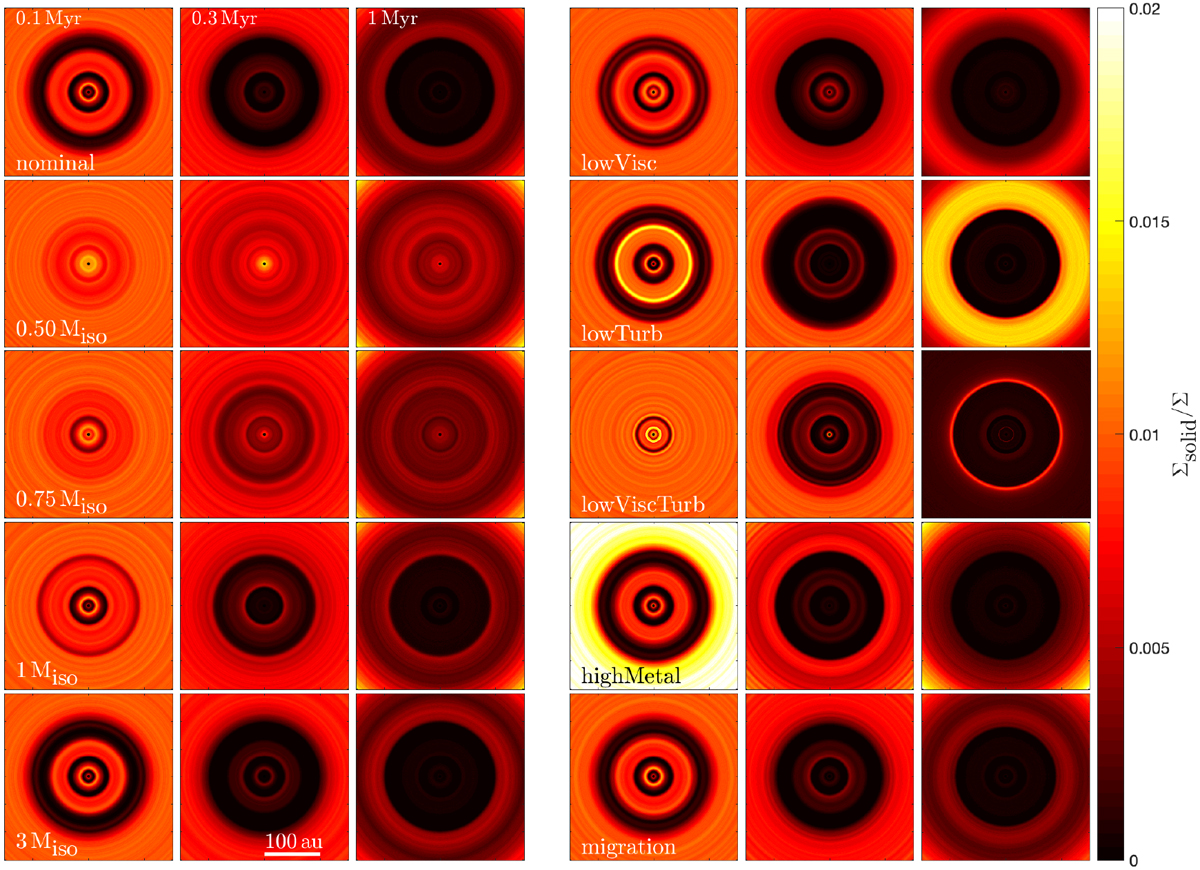Fig. 5

2D symmetric disc images of the evolution of the solid-to-gas surface density excluding planetesimals for all simulations in the parameter study. In the nominal simulation where we used a planetary mass of two times the pebble isolation mass fast pebble drift, little or no transport through the planetary gaps and efficient planetesimal formation at the gap edges result in that the part of the disc that is closer to the star than the outermost planet gets depleted of dust and pebbles. In the simulations where the planetary mass is lower than the pebble isolation mass (simulations 0.50 Miso and 0.75 Miso), increased transport past the gaps and less planetesimal formation results in a gap-and-ring-like structure. The width of the region where dust and pebbles are trapped depends on the planetary mass. Therefore, when theplanetary mass is changed to one or three times the pebble isolation mass (simulations 1 Miso and 3 Miso), and we compare to the nominal model, the width of the rings becomes narrower or larger, respectively. Except for this, the results are the same as in the nominal model. In simulation lowVisc, the viscosity parameter is lowered, resulting in a slower clearing of the gaps and interplanetary regions, as well as faster radial drift in the viscously expanding part of the disc. When the turbulent diffusion is lowered (simulation lowTurb), the collisional velocities decrease, resulting in larger particles which drift faster toward the star. This causes the bright ring that can be seen beyond the outermost planet at the end of the simulation. In simulation lowViscTurb, the turbulent diffusion is kept at the same level as in simulation lowTurb, but the viscosity parameter is lowered by an extra order of magnitude compared to simulation lowVisc. The combinationresults in that essentially all solids in the outer disc reach the outermost planetary gap before the end of the simulation, causing the narrow bright ring seen in the dust-to-gas ratio. In simulation highMetal, the initial solid-to-gas ratio in the disc is increased to 2%, which is a change that does not have a big effect on the appearance of the disc at the end of the simulation. Finally in the last simulation, the planets were given a constant radial velocity directed toward the star (simulation migration), resulting in a smaller radius of the cavity.
Current usage metrics show cumulative count of Article Views (full-text article views including HTML views, PDF and ePub downloads, according to the available data) and Abstracts Views on Vision4Press platform.
Data correspond to usage on the plateform after 2015. The current usage metrics is available 48-96 hours after online publication and is updated daily on week days.
Initial download of the metrics may take a while.


